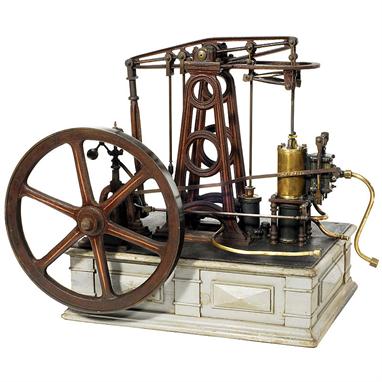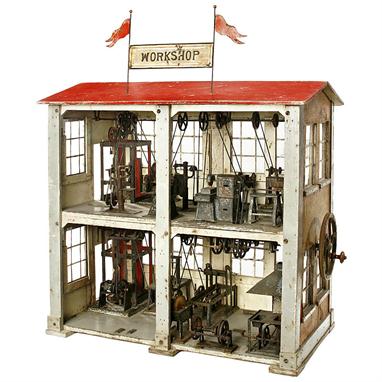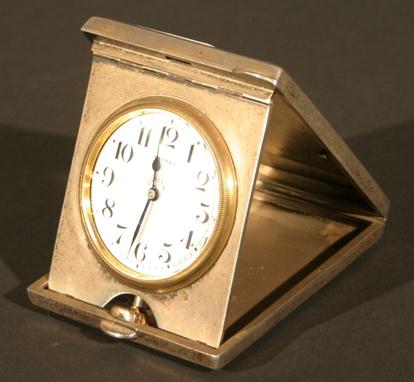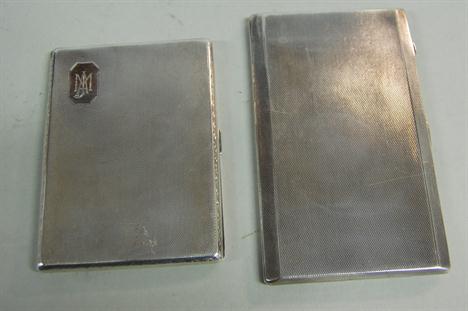186062 Preisdatenbank Los(e) gefunden, die Ihrer Suche entsprechen
186062 Lose gefunden, die zu Ihrer Suche passen. Abonnieren Sie die Preisdatenbank, um sofortigen Zugriff auf alle Dienstleistungen der Preisdatenbank zu haben.
Preisdatenbank abonnieren- Liste
- Galerie
-
186062 Los(e)/Seite
3-Seated Touring Car "Wanderer (Puppchen)", 1920 Manufactured by: "Wanderer Werke, Chemnitz", car no. 3517, with matching 4-cylinder in-line engine no. 3517, 15 hp, right-hand drive, acetylene lamps, spoked wheels. Roof and interior partly restored, otherwise unrestored original condition. - A true barn find! 3-sitziger Tourenwagen "Wanderer (Puppchen)", 1920 Hersteller: "Wanderer Werke, Chemnitz", Fahrgestell-Nr. 3517, 4-Zylinder-Reihenmotor mit gleicher Hersteller-Nr. 3517, Motor dreht frei! 15 PS, Rechtslenker, Acetylenlampen, Speichenräder. Dach und Innenausstattung teilweise erneuert, ansonsten unrestaurierter Originalzustand. Ein echter Scheunenfund! Condition: (4/-) Starting Price €3,800
Early Motorcycle, 1905 Unmarked, probably manufactured by "Minerva, Anvers", single-cylinder motor, drive with pulleys and belt, also with paddles and chain, carbide lamp. Engine turns freely! Barn find in unrestored original condition! Frühes Motorrad, 1905 Unbezeichnet, Hersteller vermutlich "Fahrradfabrik Minerva, Antwerpen", 1-Zylinder-Motor, Antrieb über Lederriemen und Riemenscheiben, außerdem Pedalantrieb über Kette, Karbidlampe. Motor dreht. Scheunenfund in unrestauriertem Originalzustand. Condition: (4-/-) Starting Price €3,800
Belgian 4-Cylinder Motorcycle "FN", 1912 Manufactured by "Fabrique Nationale", with 4-cylinder in-line engine, transmission with cardan shaft, pedals replaced, engine turns freely, a true barn discovery of a sleeping beauty in unrestored original condition! Belgisches 4-Zylinder-Motorrad "FN", 1912 Hersteller: "Fabrique Nationale", mit 4-Zylinder-Reihenmotor und Kraftübertragung über Kardanwelle, Pedale erneuert. Motor dreht frei. Scheunenfund in unrestauriertem Originalzustand! Condition: (4/-) Starting Price €15,000
Bicycle Diesel Engine Lohmann Model 51, 1951 Self-igniting engine, for petrol, 0,8 hp, drive with friction roll on rear wheel, complete with manuals in German and English language, unused original condition in original sales box. Fahrrad-Dieselmotor Lohmann Modell 51, 1951 Selbstzünder, fährt mit Lampen-Petroleum, 0,8 PS, Antrieb über Reibrolle auf Hinterrad, komplett mit Betriebsanleitung in Deutsch und Englisch, unbenutzter Originalzustand in Verkaufsverpackung! Condition: (2/-) Starting Price €500
Fine Musical Gold Snuff Box, c. 1810 Probably Geneva/Switzerland, double-tooth sectional-comb movements in engine-turned gold case with "sunburst" motif on lid, geometric borders and corner sways, size 2 1/5 x 1 2/5 x 3/4 in., complete with key, plays well! Watch & Listen on: Youtube.com/AuctionTeamBreker Goldene Schnupftabaksdose mit Musikwerk, um 1810 Vermutlich Genf, Kamm in Gruppen von je 2 Tönen, Maße 56 x 36 x 18 mm, komplett mit Schlüssel, spielt exzellent! Watch & Listen on: Youtube.com/AuctionTeamBrekerCondition: (2/2) Starting Price €6,000
Large Steam Engine Plant, c. 1920 Bench-built by the use of factory parts, vertical boiler Ø 8 3/4 in., vaporizing burner, fixed cylinder Ø 2 1/8 in., flywheel Ø 8 1/4 in., overall size 35 1/2 x 9 1/2 x 22 in. The engine needs some repair. Große Dampfmaschinen-Anlage, um 1920 Eigenbau unter Verwendung von Fabrikteilen, stehender Kessel Ø 22 cm, Vergaserbrenner, feststehender Zylinder Ø 55 mm, Schwungrad Ø 210 mm, Gesamtmaße 90 x 24 x 56 cm. Die Anlage benötigt Instandsetzung. Condition: (4/-) Starting Price €80
Vertical Steam Engine "Bing", 1910 With boiler tube and steam whistle, fixed cylinder Ø 1/3 in., boiler Ø 2 in., flywheel Ø 2 in., on cast-iron base, overall size: 3 2/3 x 3 2/3 x 11 3/5 in. Complete with burner and all fittings. Stehende Dampfmaschine "Bing", 1910 Mit Flammrohrkessel und Dampfpfeife, feststehender Zylinder Ø 9 mm, Kessel Ø 52 mm, Schwungrad Ø 50 mm, auf Gußsockel, Gesamtmaße: 93 x 93 x 295 mm. Komplett mit Brenner und allen Armaturen. Condition: (2/2) Starting Price €80
Vertical Steam Engine "Bing (4102): Nora", 1919 With steam whistle, oscillating cylinder Ø 2/5 in., boiler Ø 3 1/8 in., flywheel Ø 3 1/8 in., overall size: 5 1/2 x 5 1/2 x 15 1/8 in., complete with burner and all fittings. Stehende Dampfmaschine "Bing (4102): Nora", 1919 Mit Dampfpfeife, oszillierender Zylinder Ø 10 mm, Kessel Ø 80 mm, Schwungrad Ø 80 mm, Gesamtmaße: 140 x 140 x 385 mm. Komplett mit Brenner und allen Armaturen. Condition: (2-3/2) Starting Price €120
Lot Steam Machine Accessories 1) Large transmission, length of axle: 32 2/3 in. - 2) 15 flywheels, Ø up to 6 in. - 3) 9 books about steam and railways. - 4) About 50 taps, valves and connection parts. - 5) Wheels and gearwheels. - And: 6) Brass "Krupp" steam engine plate, with German national emblem (eagle). Lot Dampfmaschinen-Zubehör 1) Große Transmission, Achsenlänge: 83 cm. - 2) 15 Schwungräder, Ø bis 15 cm. - 3) 9 Bücher über Dampfmaschinen oder Eisenbahnen. - 4) Ca. 50 Hähne, Ventile und Verbindungsteile. - 5) Räder und Zahnräder. - Und: 6) "Krupp"-Dampfmaschinen-Schild von 1941, mit deutschem Hoheitszeichen. Condition: (3/-) Starting Price €80
Live Steam Traction Engine "Metafot", c. 1975 Heavy metal construction, wooden roof, charcoal or coal firing, forward and reverse drive, length 17 3/4 in., weight 11 kg, complete with all fittings, good condition. Lokomobil "Metafot", um 1975 Echtdampflokomobile, schwere Metallausführung, Holzdach, Holz- oder Steinkohlebefeuerung, Vor- und Rückwärtsfahrt, Länge 45 cm, Gewicht 11 kg, komplett mit allen Armaturen, guter Zustand. Condition: (2/-) Starting Price €650
Live Steam Coal-Fired Showman`s Engine, 1968 Manufacturer: Maxwell Hemmens, Engineers, Thorganby, York, reversible, 2 gears, steerable front axle (with chains), parking brake, manometer, electric lighting, fixed cylinder Ø 1 1/4 in., boiler Ø 2 3/4 in., flywheel Ø 4 1/2 in., overall size: 21 7/8 x 7 7/8 x 15 3/4 in., complete with all fittings. In as new unfired condition. Fascinating model of first-class engineering quality. Watch & Listen on: Youtube.com/AuctionTeamBreker Englisches Schaustellerfahrzeug mit Dampf- antrieb, 1968 Kohlebefeuerter Dampftraktor mit Dynamo, Hersteller: Maxwell Hemmens, Engineers, Thorganby, York, umsteuerbar, 2-Gang-Getriebe, lenkbare Vorderachse (über Ketten), Feststellbremse, Manometer, elektrische Beleuchtung, feststehender Zylinder Ø 32 mm, Kessel Ø 70 mm, Schwungrad Ø 115 mm, Gesamtmaße: 555 x 200 x 400 mm. Komplett mit allen Armaturen. Unbefeuerter Neuzustand! Ein großartiges Modell von höchstwertiger Qualität. Watch & Listen on: Youtube.com/AuctionTeamBrekerCondition: (1/1) Starting Price €1,500
Ernst Plank: Horizontal Steam Engine (No. 108), 1895 Early model, mostly brass, double action oscillating cylinder, large flywheel Ø 5 in., water guage replaced by 2 taps, otherwise complete with burner, on wooden base, overall size 9 1/2 x 7 1/2 x 10 1/5 in. Very rare! Watch & Listen on: Youtube.com/AuctionTeamBreker Ernst Plank: Bockdampfmaschine (Nr. 108), 1895 Frühes Modell, zumeist aus Messing gefertigt, doppelt wirkender oszillierender Zylinder, großes Schwungrad Ø 13 cm, Wasserstandanzeiger ersetzt durch 2 Hähne, ansonsten komplett mit Brenner, auf Holzsockel, Gesamtmaße 24 x 19 x 26 cm. Sehr selten! Watch & Listen on: Youtube.com/AuctionTeamBrekerCondition: (3+/3+) Starting Price €1,700
Model Steam Engine Type "James Watt", c. 1900 Low-pressure single-cylinder beam engine, iron- and brass-made, on wooden base, double-action cylinder Ø 2 1/8 in., condenser, working governor, flywheel Ø 12 3/5 in. overall size: 23 1/5 x 15 x 19 in. - An impressive precision model in very good working original condition. - A superb exhibition piece and collector`s item! Watch & Listen on: Youtube.com/AuctionTeamBreker Modell-Dampfmaschine Typ "James Watt", um 1900 Niederdruck-Balancierdampfmaschine, aus Eisen und Messing auf Holzsockel, doppelt wirkender Zylinder, Ø 55 mm, separater Kondensor, funktionierender Fliehkraftregler, Schwungrad Ø 320 mm, Gesamtmaße: 59 x 38 x 48 cm. - Ein beeindruckendes Präzisionsmodell in sehr gutem und funktionierendem Originalzustand! - Ein spektakuläres Exponat und Sammlungsstück! Watch & Listen on: Youtube.com/AuctionTeamBrekerCondition: (2-3/2) Starting Price €3,500
Large Workshop Building with Machines 2-floor workshop, driven by steam engine or handcrank, equipped with elevator, furnace, drilling machines, grinding machines, cutting presses and sawing machines, each floor with transmission under the roof, paper-covered wooden walls, 3 sides with crossbar windows, size 32 1/2 x 12 1/2 x 30 1/3 in., needs cleaning. An extraordinarily interesting showpiece and a true museum exhibition piece! Watch & Listen on: Youtube.com/AuctionTeamBreker Großes Werkstattgebäude mit Maschinen 2-geschossige Werkstatt, Antrieb durch Dampfmaschine oder Handkurbel, ausgestattet mit Fahrstuhl, Schmiedeofen, Bohr-, Schleif-, Stanz- und Sägemaschinen, Transmissionen unter den Decken, in Holzgebäude mit Papierauflage in Fliesenmanier, 3 Seiten mit Sprossenfenstern, Maße 60 x 32 x 77 cm, benötigt Reinigung. - Ein außerordentlich interessantes Schau- und Ausstellungsstück! Watch & Listen on: Youtube.com/AuctionTeamBrekerCondition: (4/4) Starting Price €2,500
World`s First Patented Copying Press by "James Watt" (1st Model!!), 1780 On February 14th, 1780, in England, some 230 years (!) ago, James Watt, the famous inventor of the steam engine, was granted a patent for his first duplicating machine under patent no. 1244. The machine was sold by "James Watt & Company, Soho/Birmingham, England". His invention was a result of his own business as he had permanent correspondence with his partner Matthew Boulton while travelling - mostly to his steam engine projects in Cornwall. And James Watt was too often very frustrated when he received a letter after several weeks with answers by M. Boulton to his written questions because he had no copies of his letters, of course! - So he started developing world`s first portable copying press! And by the end of 1780 already 150 machines were sold, and 630 presses by the end of the first full business year! - And it is reported that in the early 1780`s Benjamin Franklin, George Washington and Thomas Jefferson used the James Watt copying machine! In 1785 Jefferson was using both the stationary and the portable presses by James Watt & Co. The portable case opened up on hinges, and its upper section contained a collapsible writing pad for preparing the documents. The typewriter had not yet been invented, and copies could be made only of handwritten letters, diagrams and drawings. Underneath the writing pad were compartments for pencils, pens, rulers and paper, as well as a special compartment (the "damping box") which served for treating the copying paper. The metal-coated box was filled with clear well water (3/4 of an ounce) into which 24 sheets of copying paper were placed. A metal-coated lid was placed on top to keep the paper flat. After 12 hours, the sheets were thoroughly moist, and thus treated and ready to be used for copying. The number of sheets required for immediate use could be removed, and the remainder could be left in the box for up to two weeks, ready to be used at any time. The actual copying apparatus, consisting of two brass platens which were turned via the side handle, also located in the bottom section of the case. The original document was placed in the copying plate between the felt-covered, swing-up cover plate; the moist copying paper was placed on top of it, and this was then covered by oilpaper. The pressure by slow turning of the plate between the two platens caused the special copying ink of the original to be taken over, and thus transferred, onto the moist sheet (mirror inverted). The copy was ready for use following 24 hours in a drying book of absorbent paper (as for postage stamps). Because the ink was passed through in this manner, the printing on the copy could, of course, be read only on what was actually the reverse side of the page. The basis for good copies was the special copying ink in which the original was written. A great deal of practice was also necessary to prepare sheets for use as copying paper, as they had to be absolutely uniformly moistened. The bottom part of the case also contained inkwells as well as containers of dry ink powder for making ink when travelling. Der 1. patentierte Kopierer der Welt von "James Watt", 1780 (1. Modell!!) Unter Patent-Nr. 1244 wurde vor über 230 Jahren (!) am 14. Februar 1780 in England dem legendären Dampfmaschinen-Erfinder James Watt ein Patent für seinen Vervielfältiger erteilt. Vertrieben wurde der Apparat von der "James Watt & Company, Soho/Birmingham, England". - James Watts Erfindung war das Resultat aus seinem eigenen Geschäftsleben: Auf seinen vielen Reisen - vornehmlich zu seinen Dampfmaschinen-Projekten in Cornwall - führte er ständig Korrespondenz mit seinem Partner Matthew Boulton. Sehr oft war James Watt völlig frustriert, wenn er die Antworten seines Partners nach Wochen bekam, weil er nicht mehr wußte, was er selbst angefragt hatte. So begann er, den ersten Kopierapparat der Welt zu entwickeln. - So wird berichtet, daß Anfang der 1780er Jahre amerikanische Persönlichkeiten wie Thomas Jefferson, Benjamin Franklin und George Washington die Watt-Kopierpresse benutzt haben. Jefferson hat sogar beide James-Watt-Kopierer benutzt, den stationären und den tragbaren! Der transportable Kasten wurde aufgeklappt und enthielt im oberen Teil eine falt- und aufstellbare Schreibunterlage zum Anfertigen der Schriftstücke. Da die Schreibmaschine noch nicht erfunden war, bezog sich die Vervielfältigung allein auf handgeschriebene Briefe, Pläne und Zeichnungen. Unter der Schreibunterlage befanden sich Fächer für Stifte, Federhalter, Lineale sowie Schreib- und unpräpariertes Kopierpapier. Der untere Teil des Apparates enthält die "Damping Box", die zum Präparieren des Kopierpapiers diente. In das metallbezogene Schubfach wurde klares Quellwasser (3/4 ounce) gefüllt und bis zu 24 Blatt Kopierpapier eingelegt. Ein ebenfalls metallbezogener Deckel wurde zum Planhalten der Blätter darübergelegt. Nach 12 Stunden waren die Blätter durchfeuchtet und somit kopierfertig präpariert. Die zum sofortigen Gebrauch benötigte Anzahl konnte entnommen werden, der Rest blieb im Schubfach noch für zwei Wochen gebrauchsfertig und jederzeit einsetzbar. Der eigentliche Kopierapparat, bestehend aus zwei Messingwalzen, die mittels seitlichem Handgriff gedreht wurden, befand sich ebenfalls im unteren Teil des Kastens. Das Original-Schriftstück legte man auf die Kopierplatte zwischen die filzbezogene hochklappbare Deckelplatte und packte darauf das feuchte Kopierpapier und darüber als Abdeckung ein Ölpapier. Bei langsamem Durchdrehen der Platte zwischen den beiden Walzen wurde durch den erzeugten Druck die Spezialkopiertinte des Originals von dem feuchten Blatt (spiegelverkehrt) aufgenommen und somit übertragen. Nach 24-stündiger Trockenzeit in einem aus saugfähigem Papier gefertigten "Trockenbuch" (wie für Briefmarken) war die Kopie gebrauchsfertig. Lesbar war die Schrift der Kopie dann natürlich nur auf der (eigentlichen) Rückseite des Blattes aufgrund der durchgezogenen Tinte. Grundlage für gute Kopien war letztlich eine Spezialtinte, mit der das Original geschrieben war. Außerdem bedurfte es großer Übung, um absolut gleichmäßig befeuchtete Blätter als Kopierpapier zu präparieren. Der untere Teil des Kastens enthielt außerdem noch Tintenfäßchen. Condition: (2/2) Starting Price €2,750
A SELECTION OF SILVER AND SILVER COLOURED METAL ARTEFACTS to include a hallmarked square engine turned decorated powder compact, an engine turned decorated silver cigarette case, a spot hammered decorated hand mirror, a thimble, a foreign silver colo ured metal powder compact and a patch box and a scent bottle, various assays
An Asprey`s engine turned silver cigarette case inscribed "Womens Transport Service F.A.N.Y", bearing initials "HCT", another similar cigarette box by Asprey & Co. Ltd. inscribed with initials "EAMcL", a Dunhill engine turned silver cigarette box inscribed with initials "DCT", another cigarette box of slightly curved form with engine turned decoration, and a circular silver compact, 22.17 oz total
An early 20th Century miniature mother of pearl cased carriage timepiece with white metal angular handle, the engine turned dial with circular enamel Arabic numerals, the underside with wind mechanism, inscribed and numbered "Brevet 33817" raised on white metal feet and contained within original green leather carrying case, bearing retailer`s name "A Barretts & Sons, Piccadilly, London" (ILLUSTRATED)
An 18 carat gold cased key wind ladies fob watch, the outer case with foliate engraved decoration, the inner case with personal inscription to "Jane Scott by John Cutlands of Newbiggin and North Seaton.... Sept 1862", the engine turned dial with Roman numerals to a movement inscribed "Reid & Sons, Newcastle on Tyne", No`d 3214
-. [Walker (George)] The Costume of Yorkshire first edition titles and text in English and French 40 hand-coloured aquatint plates by R. and D.Havell after George Walker tissue guards some foxing to guards but plates very clean contemporary calf gilt green morocco label a little rubbed at edges [Abbey Life 433; Colas 3044; Tooley 498] folio 1814 [plates watermarked 1811]. *** Depicting a variety of workers` occupations as well as sports such as nor and spell hawking and racing sea-bathing and the militia. “Plate 3 [`The Collier`] is of particular interest in being the first representation of a steam-engine on rails; built by Murray & Blenkinsop Leeds in 1812 about two years before Stephenson`s engine it was used from 1812 until 1833.” Abbey.
A Lionel boxed `0` gauge Gondola Car, Pennsylvania 477618 engine, boxed, an automatic gateman No 45N Lionel Co, Lionel Trains instruction book, Lionel Lines coal wagon, boxed Pennsylvania 347, a red Pennsylvania 477618 Eastern Division, boxed. A gas Sunoco Oils S.U.N.X. 2755 Lionel Lines, orange wagon advertising Baby Ruth Candy, track, crossings etc. With two heavy quality `0` gauge locomotives no 224
-
186062 Los(e)/Seite































![-. [Walker (George)] The Costume of Yorkshire first edition titles and text in English and French 40 hand-coloured aquatint p](http://lot-images.atgmedia.com/SR/1574/2837196/166-201157123432_468x382.jpg)






